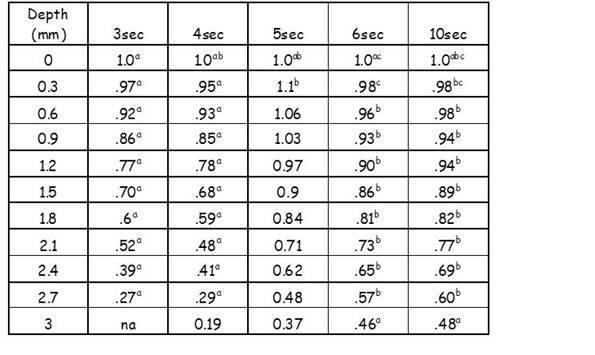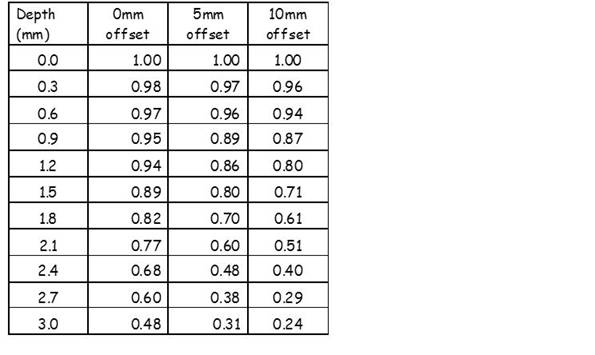Objective: This study examines the impact high intensity LED light exposure for 10sec or less and the effect of distance from the restorative surface on the degree of conversion (DC) of a nanocomposite.
Method:
Samples of Filtek Supreme Ultra Universal (FSU), A2B (n=3) were cured from one end of the specimen using an LED light (1130mW/cm2) in a semi-cylinderical stainless steel mold (3mm diameter X 10mm) for 3, 4, 5, 6, and 10seconds with the light guide in contact with the nanocomposite surface. The procedure was replicated with the light guide held 5mm and 10mm above the surface for 10second exposure.
The DC on the flat side of each specimen was assessed using Raman microscopy. A DC map was created by taking the ratio of the 1635-1608cm-1 Raman bands at each 0.3X0.3mm pixel across the flat surface according to the formula:
The 7 DC measurements at each 0.3mm distance from the illuminated surface were averaged and normalized to the DC at 0mm.
Result:
Tukeys pairwise comparison was used to determine differences (p<.05) between exposure times (Table I). Equivalent values are noted with superscripts.
Table I. Relative DC vs. distance from the illuminated surface for 3, 4, 5, 6 and 10sec exposure.
Dunnett's comparison was used to compare the 5 and 10mm distance data to the 0mm offset data (Table II). In all cases the data was statistically lower when the light was held 5mm or more above the composite surface. The resulting DC means were normalized to 0 depth DC.
Table II. Comparison of Relative DC as a function of depth and light guide distance from sample surface.
Conclusion:
Shortening cure times to less than 10 seconds significantly impacts the degree of conversion especially when the light source is not in direct contact with the composite surface.
Keywords: Composites, Conversion, Curing lights, Polymerization and Polymers
See more of: Dental Materials 7: Polymer-based Materials-Physical Properties and Performance
![[ Visit AADR's Website ]](images/banner.jpg)


